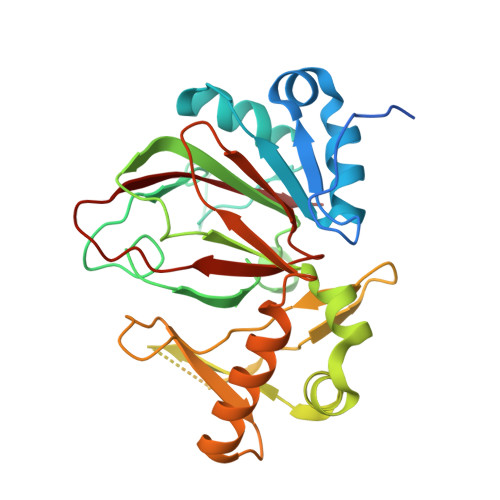Mechanism of the C5 stereoinversion reaction in the biosynthesis of carbapenem antibiotics.
Chang, W.C., Guo, Y., Wang, C., Butch, S.E., Rosenzweig, A.C., Boal, A.K., Krebs, C., Bollinger, J.M.(2014) Science 343: 1140-1144
- PubMed: 24604200
- DOI: https://doi.org/10.1126/science.1248000
- Primary Citation of Related Structures:
4OJ8 - PubMed Abstract:
The bicyclic β-lactam/2-pyrrolidine precursor to all carbapenem antibiotics is biosynthesized by attachment of a carboxymethylene unit to C5 of L-proline followed by β-lactam ring closure. Carbapenem synthase (CarC), an Fe(II) and 2-(oxo)glutarate (Fe/2OG)-dependent oxygenase, then inverts the C5 configuration. Here we report the structure of CarC in complex with its substrate and biophysical dissection of its reaction to reveal the stereoinversion mechanism. An Fe(IV)-oxo intermediate abstracts the hydrogen (H•) from C5, and tyrosine 165, a residue not visualized in the published structures of CarC lacking bound substrate, donates H• to the opposite face of the resultant radical. The reaction oxidizes the Fe(II) cofactor to Fe(III), limiting wild-type CarC to one turnover, but substitution of the H•-donating tyrosine disables stereoinversion and confers to CarC the capacity for catalytic substrate oxidation.
Organizational Affiliation:
Department of Chemistry, The Pennsylvania State University, University Park, PA 16802, USA.


















